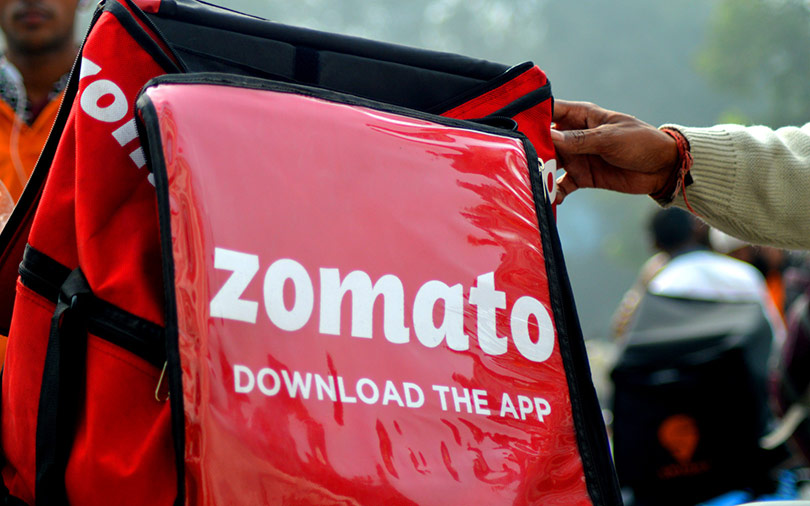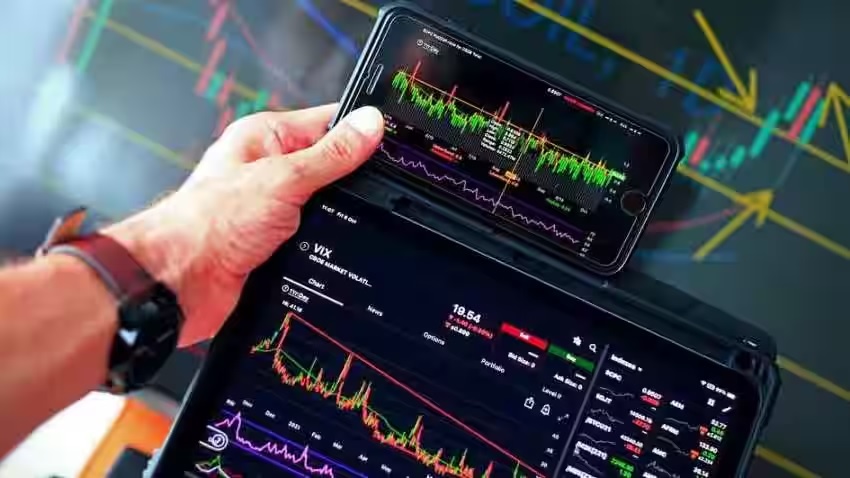Zomato Turns Profitable After 15 Years; A Jump On The Other Side or A Fleeting Triumph?
Zomato's journey has not been easy and is marked by 15 years of ups and downs; however, the tide seems to have turned now as the company has posted its first net profit of INR 2 crore in Q1 FY24. The achievement has been credited to strategic shifts, including the success of its quick commerce venture, Blinkit. The response to this remarkable achievement has generated a positive from the stock market and brokerage firms; however, the question still lingers, has Zomato reached a stage of profitability, or is this a momentary blip on the radar?

Zomato has finally hit a six, by reporting its maiden net profit of INR 2 crore in Q1 FY24, the company’s path to profitability is atrributed to its strategic adjustments, not whitstanding the success of its quick-commerce venture, Blinkit.
While this news has garnered a lot of positive reactions from both the stock market and brokerage firms, nonetheless, it is expected that astute investors will focus on the consistency of its quarterly profits, particularly long trem investors who prioritize meanigful trends rather than short term fluctuations.
On August 3, 2023, Deepinder Goyal, Zomato’s CEO, tweeted, “Our consolidated business (including Blinkit) is now adjusted Ebitda and PAT positive (for the first time ever!). We are proud to have achieved this milestone earlier than expected.”
In the results for Q1 FY24, the food delivery and restaurant aggregation platform witnessed a 54% surge in adjusted revenue, reaching INR 2,786 crore.
Adjusted Ebitda saw a positive upturn at INR 12 crore, a notable improvement from the negative INR 150 crore reported during the same period last year. The most striking development was the company’s transition from a loss of INR 182 crore in Q4 FY23 to a net profit of INR 2 crore.

Zomato’s Market Run
Zomato’s marked its first-ever profitability in the past 15 years, and
unsurprisingly, the stock rallied by 13%, capturing the excitement of brokerage firms who upgraded their recommendations to ‘buy.’
Yet, the pivotal question remains, has Zomato embarked on a sustainable path to profitability, or is this an isolated occurrence?
Zomato received a deferred tax credit of INR 17 crore during the quarter, contributing to its net profits; although this is seemingly a modest development, this adjustment can significantly reshape investor perceptions.
“In a journey of dramatic twists and turns since IPO, Zomato has achieved a key milestone of adjusted Ebitda and consolidated PAT positive, way earlier than the guidance. This puts to rest all the concerns around Zomato’s ability to make ‘respectable’ profits,” Jefferies stated in a note, subsequently raising the stock’s target price to INR 130 from INR 100.
The Positive Response
Several brokerage firms, including Emkay, ICICI Securities, and Motilal Oswal, echoed this sentiment.
Emkay analyst revised Zomato’s revenue estimates for FY24-26 by 13%-22%, foreseeing an improved margin trajectory. ICICI Securities retained its ‘buy’ rating and lifted the target price to INR 120 from INR 85.
)
Doubters Remain
However, not all perspectives are equally rosy, as pointed out by Anurag Singh of US-based Ansid Capital voiced scepticism, pointing out that the company’s growth remains modest and its valuation excessive.
“After three stagnated quarters in the food-delivery business, they have got 18% growth. Hardly impressive. After adjusted Ebitda, we’ve now come to adjusted revenues too?” he questions.
“Technically, there are still no profits. This business should not be valued at more than USD3 billion as the best-case scenario. Currently, it is above USD 8 billion. This is insane,” he adds.
The Valuation Conundrum
Many have pointed out the fact that Zomato, Marico, and Tata Consumer are all capital-intensive enterprises.
While Zomato’s free cash flow has been negative for the past four years, Marico and Tata Consumer have not faced this issue; yet, in the case of Zomato it commands a higher market capitalization.
As of FY23, Marico and Tata Consumer’s free cash flow stood at INR 1,200 crore and INR 1,300 crore, respectively.
In contrast, Zomato’s market cap is INR 82,000 crore, surpassing Marico’s INR 74,500 crore and Tata Consumer’s INR 77,500 crore.
However, it’s important to note that these comparisons are not apples-to-apples; Marico has decades of experience in the FMCG sector, while Tata Consumer benefits from the Tata Group’s backing. Nevertheless, Zomato’s 100x+ PE ratio starkly contrasts with the FMCG stocks’ 65x+ PE ratio.

The Fact
Since its listing in July 2021, opinions about the Zomato stock have been mixed. While the IPO was launched during a bullish market, there were many who had doubts about the business model and pricing.
The stock debuted at INR 116, above the issue price of INR 76, with a price-to-sales ratio of 12x. The IPO was listed at 30x price/sales to its FY21 sales of INR1,994 crore; while the valuation is relatively lower, it remains high in comparison to Marico or Tata Consumer.
Initial expectations were grounded on India’s rising per-capita income and increased consumption, assuming a surge in demand for food-ordering apps.
However, subsequent challenges altered this narrative; the company failed to witness the expected demand, affecting its sales trajectory.
The stock plummeted by 60% in July 2022 before rebounding to a 112% increase at INR 100. Investors who participated in the IPO currently face a 13% loss.
Management’s Ambitious Guidance
Zomato’s management provided an ambitious growth forecast, which some analysts view as optimistic given the current consumer sentiment.
Despite the challenges, the company achieved profitability sooner than expected. Blinkit, Zomato’s quick-commerce business, achieved profitability in June 2023, and the company aims to achieve adjusted Ebitda break-even within the next four quarters.
Deepinder Goyal, Zomato’s MD and CEO, emphasized the importance of streamlining operations and deploying the right personnel for sustained growth. The impact of seemingly risky decisions has transformed the business trajectory faster than anticipated.
“We have been working hard to make our business less complex, and putting the right people at the right spots within our businesses. These things do not have definite/measurable impact, and I can, in hindsight, say that most of our seemingly ‘risky’ bets have changed the trajectory of the business significantly, much faster than we expected.”
The Jump
Gross order value (GOV) rose to INR 7,318 crore for the quarter, reflecting increased order volumes and a modest uptick in average order value
as against INR 6,425 crore in the corresponding quarter of the previous financial year.
It was also up sequentially from INR6,569 crore in the March quarter. The average monthly transacting customers were at 1.75 crore in Q1 FY24 versus 1.67 crore in the year-ago period.
The surge in GOV was attributed to the robust growth in order volumes and a modest increase in average order value. Zomato has observed a demand recovery since February 2023, which continued into Q1 FY24. Furthermore, Q1 typically represents a seasonally stronger period for the company, according to the information provided in the exchange filing.
The adoption of the Gold program contributed significantly to this growth, accounting for over 30% of GOV in the food delivery segment.
Blinkit, while experiencing slower GOV growth due to temporary disruptions, is anticipated to contribute substantial value in subsequent quarters.
)
Growth Prospects and Beyond
Experts recognize that Zomato’s optimism stems from its faster-than-expected attainment of profitability.
Q1 witnessed an 11% growth in demand, showcasing the company’s potential despite adverse weather conditions. This demand growth, albeit modest, highlights the company’s resilience in the face of challenges.
Despite some concerns, Zomato’s growth journey is supported by its strategic decisions.
Nikhil Kishore, an FMCG and e-commerce analyst, commends Zomato’s commitment to profits and rationalizing costs.
The Future View
Blinkit holds the key as a significant factor in an intensely competitive industry; while the market remains cut-throat, doubts persist about any company’s sustained profitability.
Zomato’s monthly active users (MAU) count at 1.75 crores is noteworthy, though stagnant over the past year.
While Zomato’s trajectory appears positive, prudent investors will focus on the consistency of quarterly profits in the coming quarters. A potential upward trajectory in the stock is acceptable for long-term investors, provided they base their decisions on meaningful trends rather than transient fluctuations.
The Last Bit, Zomato’s journey towards profitability has been a rollercoaster ride, culminating in its first-ever net profit in Q1 FY24.
The strategic shifts, including the success of Blinkit, have elicited optimism among investors and industry observers.
However, the road to consistent profitability remains uncertain, with challenges such as intense competition and the need for sustained growth still ahead.
While Zomato’s stock has rallied and brokerages have upgraded their recommendations, prudent investors will keep an eye on the company’s ability to deliver consistent profits over the coming quarters.
As Zomato navigates this critical juncture, the coming months will reveal whether this triumph is a turning point or merely a fleeting success in its tumultuous journey.



